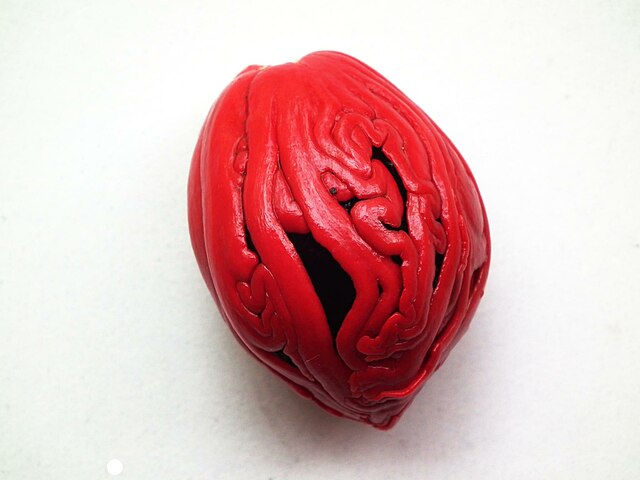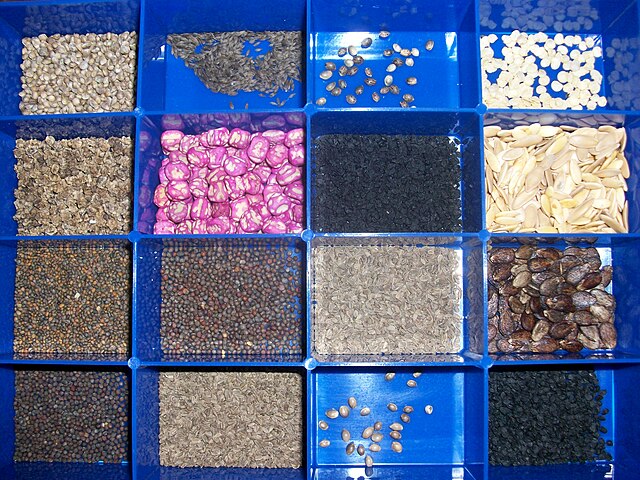An aril, also called an arillus, is a specialized outgrowth from a seed that partly or completely covers the seed. An arillode or false aril is sometimes distinguished: whereas an aril grows from the attachment point of the seed to the ovary, an arillode forms from a different point on the seed coat. The term "aril" is sometimes applied to any fleshy appendage of the seed in flowering plants, such as the mace of the nutmeg seed. Arils and arillodes are often edible enticements that encourage animals to transport the seed, thereby assisting in seed dispersal. Pseudarils are aril-like structures commonly found on the pyrenes of Burseraceae species that develop from the mesocarp of the ovary. The fleshy, edible pericarp splits neatly in two halves, then falling away or being eaten to reveal a brightly coloured pseudaril around the black seed.
An aril that surrounds the nutmeg seed is used as a spice called mace.
The edible white aril of Litchi chinensis is sometimes called an arillode or false aril. It grows partly from the funiculus and partly from the integument of the seed.
The fleshy aril that surrounds each seed in the yew is a highly modified seed cone scale.
In botany, a seed is a plant embryo and food reserve enclosed in a protective outer covering called a seed coat (testa). More generally, the term "seed" means anything that can be sown, which may include seed and husk or tuber. Seeds are the product of the ripened ovule, after the embryo sac is fertilized by sperm from pollen, forming a zygote. The embryo within a seed develops from the zygote and grows within the mother plant to a certain size before growth is halted.
Photomicrograph of various seeds
The inside of a Ginkgo seed, showing a well-developed embryo, nutritive tissue (megagametophyte), and a bit of the surrounding seed coat
Seed coat of pomegranate
A collection of various vegetable and herb seeds







